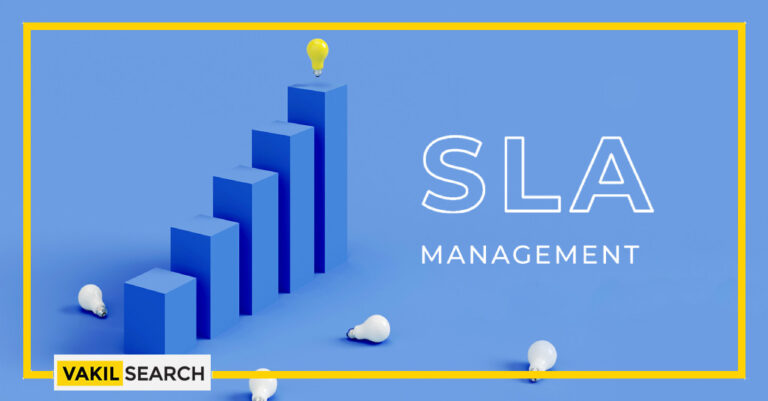This article gives you an understanding of what is a service level agreement and what are its key performance indicators. Let's explore the differences between the two.
Service level agreement is legally binding contracts which detail the services that are to be provided by service providers. They include various levels of expectations of the services they expect. They also lay down the responsibilities of the service providers and the repercussions in the event of a breach of the contract on either side. Some of the other details include the type of services during peak hours and non-peak hours. Other details include penalties and repayments. In this blog, we’ll dive deeper into what SLA and KPIs are, their differences, and how they can be used to drive success in any organization.
The key objective of SLAs is to protect the interests of the client as well as the service providers. A service level agreement is established on the mutual understanding of both sides and, once signed, cannot be revised or changed. This makes both the parties equally responsible, and no one can dispute the details.
Some of the Primary Elements of Such an Agreement Include the Following:
- Names of the two individuals or businesses involved – the service provider and the customer
- A detailed description of the various services to be provided to the customer by the service provider
- Measurement of service performance
- Penalties and redressal
- Details of the stakeholders
- Security of services and client’s business information
- Disaster recovery process and solutions.
Key performance indicators (KPIs) are values that can be measured. They give an insight into an organisation’s performance across a specific time frame. A KPI is also to assess and evaluate an employee’s progress across a time frame. Most organisations resort to KPIs to assess the progress of different departments as well. The KPIs you set for your business, employees or departments should be achievable, distinct, relevant, timely and measurable. The sources of data you resort to should be extremely reliable.
The Key Objectives of KPIs are:
- Enable performance measurement of the organisations, departments as well as individual employees according to the strategic goals set for each
- They help the respective Heads of departments to understand the progress of their respective teams and the hindrances, if any, that are slowing down the team, giving the team time to rectify the same
- KPIs are clear indicators of a business enterprise’s path to success and whether that is in sync with the objectives of the organisation
- Lead personnel resort to KPIs to make effective and impactful decisions for the growth and expansion of the business.
Different Types of SLAs
It is a different type of agreement that helps measure the service providers’ performance to their clients. There are three types of service level agreements. These include the following:
- Customer-Based – This involves a single contract for a customer. It documents the various services that the service provider will furnish in sync with the customer’s expectations. The customer-based agreement is legally binding on the service provider and the customer. It also entails details like performance measurement, contingencies and resolutions, repayments in case of consistent failure, as well as the termination of the contract
- Internal SLA – This refers to an agreement that furnishes services within a business enterprise. Information technology is an ideal example of this type of agreement
- Multi-Level – In this type of agreement, clients can customise the type of services they require in accordance with their needs. They can also include specific conditions to avail of the most feasible services.
Key Performance Indicators (KPIs) – KPIs help determine an organisation’s achievements and overall success according to the targets set.
Different Types of KPIs:
- Financial-Based – These give an insight into the gross as well as net profits, the current financial ratio, i.e., how much cash the organisation has on hand and how much is invested in assets, as well as in debts. These also determine accounts receivables, the inventory turnover rate, and judiciously the business uses its various resources
- Customer-Based – These are more centred around customer satisfaction. These KPIs are often resorted to by the specific team leaders to analyse customer relations which in turn impacts sales and customer retention. These KPIs enable you to manage these teams more effectively. This helps lower costs and also increases the level of satisfaction
- Process-Based – These KPIs help understand the efficiency of a business moving forward. They provide details on how various tasks are being performed in accordance with the said goals. They help you gain insights into region-wise revenues as well as new client acquisitions
- Sales & Marketing – These revolve around these two key departments and indicate the effectiveness of the various campaigns in marketing and their success levels. The sales-oriented ones help gauge the success levels of sales funnels and whether they effectively increase sales revenues.
Examples of SLA and KPI:
Given below are individual instances of the different types of service level agreements.
- Customer-Based SLA – A telecommunications service. This service encompasses internet services, mobile phone messaging, and voice calls. All these services are rendered under one contract
- Internal SLA – A Facilities manager offers maintenance services to all the divisions across an organisation under one contract
- Multi-level SLA – An internet service provider offering the same service but of different speed levels to different customers on the same premises.
Some Examples of Key Performance Indicators Include the following:
- Strategic KPIs – These pertain to an organisation’s long-term objectives, e.g., growth in revenues. The chief finance officer can get detailed information about an organisation’s performance by going through a strategic KPI
- Qualitative KPI /Quantitative KPI – Quantitative KPIs are easily measurable, e.g., the number of views a particular article receives on a social media platform or the number of visitors to your e-commerce store in a day. A qualitative KPI cannot be measured but signifies other aspects, e.g., the satisfaction levels of an employee
- Operational KPIs – These KPIs help measure the various levels of efficiency in an organisation. These include operations and employee functions on a daily basis
- An organisation’s diverse departments require different KPIs, just as various business projects require KPIs that help analyse and measure performance before and after completing a project.
Conclusion
Service level agreements (SLAs) and Key performance indicators (KPIs) are defined differently but experience some common metrics. They help motivate an organisation and its employees to understand their flaws, devise impactful strategies, increase efforts and work towards achieving goals. The end results of both are similar names, optimising of services whether on an individual, customer or organisational level.
Read more:










